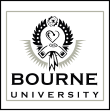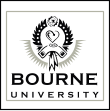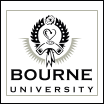Book of Gates Manuscript Has Been Studied,
And Results Show It Comes From The Eemian
• Experts state Rare book compared to the Bible and the Koran as a Religious Document proves to be of greater antiquity. Part of the Nurubi Fragments collection preserved under special storage in the Middle Eastern Collection, British Museum, London. Sir Henry Kendrick, Senior Lecturer has stated the tablets are the source for the famed "Book of Gates" that caused scientific inquiry. The tablets were discovered in Nineveh by Englishman Austen Henry Layard in the 19th Century. A Theological scholar named Theodore McMillian has stated his examination will shed light on the elusive "Book of Gates", an ancient religious artifact that is alleged to have originated in the Caspian Sea region during the Eemian , reported several scientific journals. The alleged 130,000 year old book, which theologians are referring to as the "Revelations of Izal" or the "Gospels of Izal" has remained suppressed since the 12th century AD by Cambridge University, according to the World Daily News. The newly discovered "gospel" is written in an undecipherable language and composed of old wood and ancient parchment. Cambridge University had made an unannounced request to have the mysterious book scientifically examined in 2017. The Highland Rare Book and Manuscript Library has announced it to be an authentic artifact after digital scanning, carbon dating and delicate imaging of its fragile condition. The book has been requested by the Office for the Vatican Secret Archives for their library's own comparison to the copy now held in Vatican hands since the Middle Ages. The rare and highly sought out book has been priced at an astonishing 500 million dollars by the Rare Book Catalogue. The book has been shrouded in mystery and legend historically since the "Caspian gospel" was first mentioned in a collection of stone tablets called the Nurubi Fragments found in Nineveh by British archaeologists in the 19th century. Now preserved in the British Museum's Special Middle Eastern Collections, the tablets were studied by Oxford Professor and explorer, Jebidiah E. Smith, who also mentioned them in his controversial work "A Commentary on the Book of Gates (1868)." Theodore McMillian's announcement today authenticates the Book of Gates (pictured left) and Professor Jebidiah Ethan Smith's "A Commentary on the Book of Gates" (left), pictured here in their three editions published by Oxford Press (Editions 1868, 1872 and 1876). These very rare, priceless tomes are extremely valuable to collectors and universities the world over and sought. However, it is a record that not only disrupts all religious beliefs but also current geological theories. It astonishingly rebukes the world's largest institutions as Christianity and Islam, and reveals the Prophet Izal proclaiming the return of the early First Gods. The book also produces prehistoric perceptions of the Archean 3.5 billion years ago revealing an ancient continent called Yidath where all life presumably began. Professor Philip Stannard of the Courtland Institute has championed it's perceptions and believes the book could be historically accurate since the publishing of Smith's commentary in 1868. Seven copies of the "Caspian Bible" are known to collectors and universities throughout the United States and Europe. Technician placing the Book of Gates under intense testing at the Highland Rare Book and Manuscript Library in London, England. Cambridge University released their copy of the book to the highly regarded institution to determine the book's authenticity in 2017. But many scholars, including respected London College Professor Alexander Marin, believe the "Caspian gospel" could be an elaborate hoax, said theologian Theodore McMillian. He stated Jebidiah Smith lived in an period when pseudo-archaeology and spiritism produced questionable religious tablets and artifacts through occult manipulation, which corresponds to his written testimony having received the book from Izal in spirit form. "The Age of Enlightenment - referring to the knowledge explosion of the 19th century - also produced large varieties of esoteric manuscripts not unlike the "Book of Gates" by men like Smith," Marin said. "Archaeologists unearthing these Caspian ruins reported by recent newswires may not be connected to the manuscripts as they are hoping. They may have no correlation to stories mentioned in the Nurubi Fragments." Professor Philip Stannard said he believes as investigations continue they will prove the authenticity and evidence that the Caspian origin of the book is factual.


© bOURNE uNIVERSITY 2021

THE BOURNE JOURNAL OF
ARCHAEOLOGY








CURRENT ISSUE

Member Since May 1922
Explore
Discover
Find
Catalog
Publish
Reward

LONDON-ROME-BERLIN-MOSCOW-NAPLES


Recent Articles
Proud Sponsor of Bourne’s Journal
Sponsored Works
News of the World





related posts
SHARE ON:
SHARE ON:


Book of Gates Manuscript Has Been Studied,
And Results Show It Comes From The Eemian
• Experts state Rare book compared to the Bible and the Koran as a Religious Document proves to be of greater antiquity. Part of the Nurubi Fragments collection preserved under special storage in the Middle Eastern Collection, British Museum, London. Sir Henry Kendrick, Senior Lecturer has stated the tablets are the source for the famed "Book of Gates" that caused scientific inquiry. The tablets were discovered in Nineveh by Englishman Austen Henry Layard in the 19th Century. A Theological scholar named Theodore McMillian has stated his examination will shed light on the elusive "Book of Gates", an ancient religious artifact that is alleged to have originated in the Caspian Sea region during the Eemian , reported several scientific journals. The alleged 130,000 year old book, which theologians are referring to as the "Revelations of Izal" or the "Gospels of Izal" has remained suppressed since the 12th century AD by Cambridge University, according to the World Daily News. The newly discovered "gospel" is written in an undecipherable language and composed of old wood and ancient parchment. Cambridge University had made an unannounced request to have the mysterious book scientifically examined in 2017. The Highland Rare Book and Manuscript Library has announced it to be an authentic artifact after digital scanning, carbon dating and delicate imaging of its fragile condition. The book has been requested by the Office for the Vatican Secret Archives for their library's own comparison to the copy now held in Vatican hands since the Middle Ages. The rare and highly sought out book has been priced at an astonishing 500 million dollars by the Rare Book Catalogue. The book has been shrouded in mystery and legend historically since the "Caspian gospel" was first mentioned in a collection of stone tablets called the Nurubi Fragments found in Nineveh by British archaeologists in the 19th century. Now preserved in the British Museum's Special Middle Eastern Collections, the tablets were studied by Oxford Professor and explorer, Jebidiah E. Smith, who also mentioned them in his controversial work "A Commentary on the Book of Gates (1868)." Theodore McMillian's announcement today authenticates the Book of Gates (pictured left) and Professor Jebidiah Ethan Smith's "A Commentary on the Book of Gates" (left), pictured here in their three editions published by Oxford Press (Editions 1868, 1872 and 1876). These very rare, priceless tomes are extremely valuable to collectors and universities the world over and sought. However, it is a record that not only disrupts all religious beliefs but also current geological theories. It astonishingly rebukes the world's largest institutions as Christianity and Islam, and reveals the Prophet Izal proclaiming the return of the early First Gods. The book also produces prehistoric perceptions of the Archean 3.5 billion years ago revealing an ancient continent called Yidath where all life presumably began. Professor Philip Stannard of the Courtland Institute has championed it's perceptions and believes the book could be historically accurate since the publishing of Smith's commentary in 1868. Seven copies of the "Caspian Bible" are known to collectors and universities throughout the United States and Europe. Technician placing the Book of Gates under intense testing at the Highland Rare Book and Manuscript Library in London, England. Cambridge University released their copy of the book to the highly regarded institution to determine the book's authenticity in 2017. But many scholars, including respected London College Professor Alexander Marin, believe the "Caspian gospel" could be an elaborate hoax, said theologian Theodore McMillian. He stated Jebidiah Smith lived in an period when pseudo-archaeology and spiritism produced questionable religious tablets and artifacts through occult manipulation, which corresponds to his written testimony having received the book from Izal in spirit form. "The Age of Enlightenment - referring to the knowledge explosion of the 19th century - also produced large varieties of esoteric manuscripts not unlike the "Book of Gates" by men like Smith," Marin said. "Archaeologists unearthing these Caspian ruins reported by recent newswires may not be connected to the manuscripts as they are hoping. They may have no correlation to stories mentioned in the Nurubi Fragments." Professor Philip Stannard said he believes as investigations continue they will prove the authenticity and evidence that the Caspian origin of the book is factual.


© bOURNE uNIVERSITY 2021
THE BOURNE JOURNAL OF
ARCHAEOLOGY






related posts
SHARE ON:
SHARE ON:


Recent Articles

Sponsored Works
Proud Sponsor of Bourne’s Journal





Book of Gates Manuscript
Has Been Studied, And
Results Show It Comes From
The Eemian
• Experts state Rare book compared to the Bible and the Koran as a Religious Document proves to be of greater antiquity. Part of the Nurubi Fragments collection preserved under special storage in the Middle Eastern Collection, British Museum, London. Sir Henry Kendrick, Senior Lecturer has stated the tablets are the source for the famed "Book of Gates" that caused scientific inquiry. The tablets were discovered in Nineveh by Englishman Austen Henry Layard in the 19th Century. A Theological scholar named Theodore McMillian has stated his examination will shed light on the elusive "Book of Gates", an ancient religious artifact that is alleged to have originated in the Caspian Sea region during the Eemian , reported several scientific journals. The alleged 130,000 year old book, which theologians are referring to as the "Revelations of Izal" or the "Gospels of Izal" has remained suppressed since the 12th century AD by Cambridge University, according to the World Daily News. The newly discovered "gospel" is written in an undecipherable language and composed of old wood and ancient parchment. Cambridge University had made an unannounced request to have the mysterious book scientifically examined in 2017. The Highland Rare Book and Manuscript Library has announced it to be an authentic artifact after digital scanning, carbon dating and delicate imaging of its fragile condition. The book has been requested by the Office for the Vatican Secret Archives for their library's own comparison to the copy now held in Vatican hands since the Middle Ages. The rare and highly sought out book has been priced at an astonishing 500 million dollars by the Rare Book Catalogue. The book has been shrouded in mystery and legend historically since the "Caspian gospel" was first mentioned in a collection of stone tablets called the Nurubi Fragments found in Nineveh by British archaeologists in the 19th century. Now preserved in the British Museum's Special Middle Eastern Collections, the tablets were studied by Oxford Professor and explorer, Jebidiah E. Smith, who also mentioned them in his controversial work "A Commentary on the Book of Gates (1868)." Theodore McMillian's announcement today authenticates the Book of Gates (pictured left) and Professor Jebidiah Ethan Smith's "A Commentary on the Book of Gates" (left), pictured here in their three editions published by Oxford Press (Editions 1868, 1872 and 1876). These very rare, priceless tomes are extremely valuable to collectors and universities the world over and sought. However, it is a record that not only disrupts all religious beliefs but also current geological theories. It astonishingly rebukes the world's largest institutions as Christianity and Islam, and reveals the Prophet Izal proclaiming the return of the early First Gods. The book also produces prehistoric perceptions of the Archean 3.5 billion years ago revealing an ancient continent called Yidath where all life presumably began. Professor Philip Stannard of the Courtland Institute has championed it's perceptions and believes the book could be historically accurate since the publishing of Smith's commentary in 1868. Seven copies of the "Caspian Bible" are known to collectors and universities throughout the United States and Europe. Technician placing the Book of Gates under intense testing at the Highland Rare Book and Manuscript Library in London, England. Cambridge University released their copy of the book to the highly regarded institution to determine the book's authenticity in 2017. But many scholars, including respected London College Professor Alexander Marin, believe the "Caspian gospel" could be an elaborate hoax, said theologian Theodore McMillian. He stated Jebidiah Smith lived in an period when pseudo-archaeology and spiritism produced questionable religious tablets and artifacts through occult manipulation, which corresponds to his written testimony having received the book from Izal in spirit form. "The Age of Enlightenment - referring to the knowledge explosion of the 19th century - also produced large varieties of esoteric manuscripts not unlike the "Book of Gates" by men like Smith," Marin said. "Archaeologists unearthing these Caspian ruins reported by recent newswires may not be connected to the manuscripts as they are hoping. They may have no correlation to stories mentioned in the Nurubi Fragments." Professor Philip Stannard said he believes as investigations continue they will prove the authenticity and evidence that the Caspian origin of the book is factual.


© bOURNE uNIVERSITY 2021

THE BOURNE JOURNAL OF
ARCHAEOLOGY



SHARE ON:
SHARE ON:


Member Since May 1922
Explore
Discover
Find
Catalog
Publish
Reward

LONDON-ROME-BERLIN-MOSCOW-NAPLES



Proud Sponsor of Bourne’s Journal


Like our Sponser





